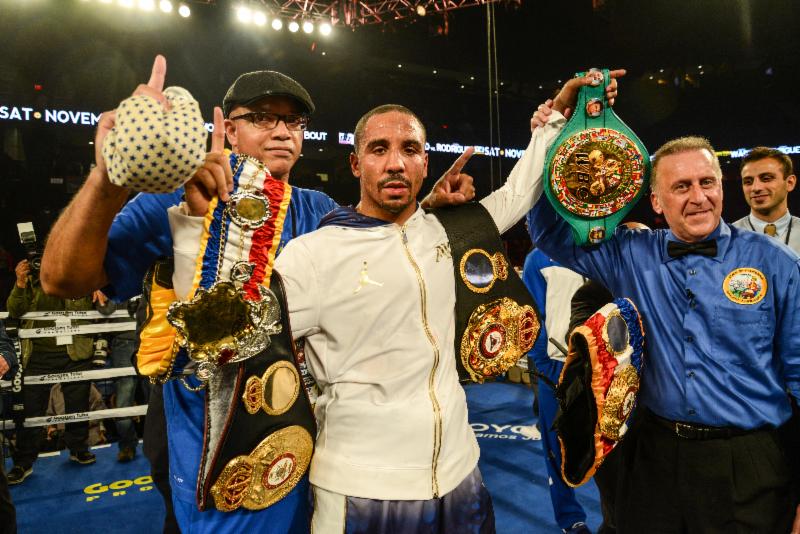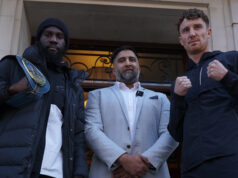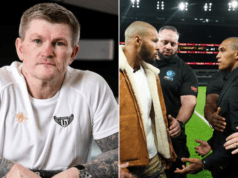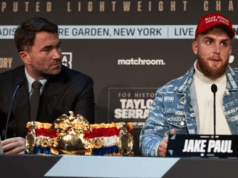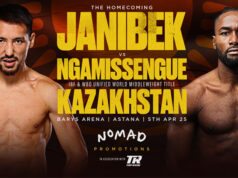The state of boxing in the United States is lamented these days, and has been for decades. Of course, citing famed author A.J. Liebling, boxing has been called dead in this country dating back close to a century already, and he was writing from the vantage point of one the true golden ages of the sport!
So, how does the good ol’ USA stack up to the rest of the world? Let’s break it down and offer a score for the United States in the World Cup of Boxing.
Today’s Pro Fighters
Much is made of the lack of successful American heavyweights as of late. That’s certainly a failure, yet, it overlooks the large picture that in many other divisions, an American is the clear top dog or presumptive candidate to be so. Consider Floyd Mayweather, ruler of both welterweight and junior middleweight, as well as Andre Ward, the super middleweight kingpin who also stopped the then light heavyweight champion, another American, Chad Dawson.
At junior welterweight, you’ll find champion Danny Garcia. He touts his Puerto Rican lineage, but is American born and raised. Terence Crawford is the number 1 ranked lightweight in the world, in a division with a currently vacant championship.
Fighters from the USA have never been dominant beneath bantamweight, offering a sweet spot in today’s crop from about 130 lbs, where you’ll find Mikey Garcia (who touts his Mexican lineage, but like Garcia, is American born and raised) to 175 lbs, where a near-50-year-old Bernard Hopkins is still getting it done. As mentioned, that sweet spot happens to include the two best fighters in the world.
Points: 5/5
Fans and Venues
The United States is home to many of the world’s best and most famous fighting venues, and fight cities. There’s always something special about a big fight night at Madison Square Garden, while Las Vegas and its casinos remain the big money fight capital of the world.
From Los Angeles with Staples Center, the Forum and StubHub Center, to Atlantic City and Boardwalk Hall, there’s no shortage of venues. Look closer, and you’ll even find a club scene in urban areas and hubs, although one which pales in comparison to its past.
Big names and major events can fill any of the aforementioned arenas. But if you haven’t reached that star status yet, don’t have a cross-cultural appeal to the most rabid fan bases, pockets of Mexican and Puerto Rican fans in the southwest and northeast, respectively, or aren’t fighting in your hometown, a filled arena can be harder to come by – ask Andre Ward.
Points: 3/5
Amateur System
Things have changed since the star-studded and spectacular 1976 and 1984 Olympic teams, which won a combined 14 gold medals. USA Boxing hasn’t produced a gold medalist since Ward in 2004, and across the past two Olympics has won only a single medal, Deontay Wilder’s in the 2008 Beijing games, and a miserable goose-egg at London 2012.
Quite simply, the current amateur system in the USA is atrocious. Amateur fighters from the United States still emerge as top professionals, but aren’t suited to the international game, nor do they get the seasoning or experience they should. Once they turn pro, American fighters are typically babied for a 4-year period which may offer some room to develop, e.g., Demetrius Andrade, and others, space to flat line, e.g., Gary Russell.
There’s no cohesive system, there’s a failure in attracting athletes to the sport, and there’s a major problem with development and retention of talent.
Points: 1/5
Professional System
Boxing in the USA is in some ways morphing closer to the club-status it has in other countries, such as you may find in southeast Asia and Japan. In other words, fighters seem to be conglomerating, offering a select few trainers the chance to turn themselves into big names and their operations into mega gyms with stacked teams.
That’s what you’ll find at the Wild Card with Freddie Roach and Co., as well as the rival Robert Garcia Academy in Oxnard. Virgil Hill’s team is burgeoning as well. That means that even in the absence of the late Emanuel Steward, the USA remains perhaps the go-to international destination for top flight sparring, training and coaching.
Points: 5/5
History & Significance
Boxing is dead! Of course it’s not, although no one would argue that the sport maintains the level of interest it once did. Certainly, boxing in the USA is self-defeating, limiting access to potential new fans with excessive pay-per-views and a lack of network television coverage, and failing to put together fights which would captivate more than the hardcore set which is already tuned in.
It’s a sad day for a fight fan when everything from NASCAR to golf to tennis to women’s NCAA softball or lord knows what else seems to get attention on ESPN before boxing does. Still, there’s a hardcore following which has left boxing in the state of a healthy niche, but decidedly non-mainstream, sport.
For significance, the USA ranks poorly. But even today, international fighters crave breaking out in the American fight market for the exposure and money it can bring when you reach the pinnacle. That window is short for any fighter, and space is tight at the top.
All of that said, the history of the sport in this country is as rich as it gets. Long gone are the days of Jack Dempsey and Gene Tunney, of Joe Louis and Sugar Ray Robinson, of Muhammad Ali and Joe Frazier, and even Sugar Ray Leonard and Marvin Hagler. But don’t forget that those days existed.
Points: 2/5
Pound for Pound Top 20
Here’s where the USA shines, and gets a bail out. Turning a rather middling performance in the above scoring criteria into perhaps the front runner to win the Boxing World Cup, the USA gets a slew of bonus points thanks to the strength of the top tier. Mayweather and Ward are ranked #1 and #2 pound for pound, with Timothy Bradley and Bernard Hopkins also falling into the top 10. Elsewhere, Danny Garcia, Mikey Garcia are in the top 20, adding up to a game-changin 12 point bonus for the USA.
Bonus Points: 12
Overall Boxing World Cup Score for the USA: 28 points


